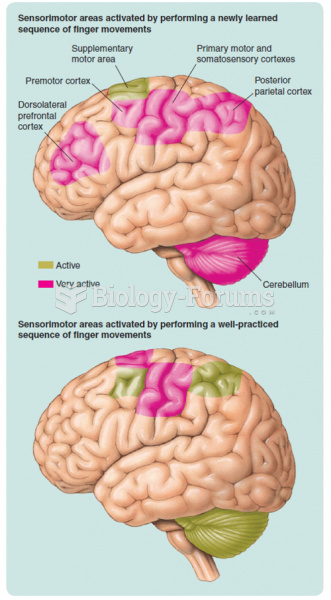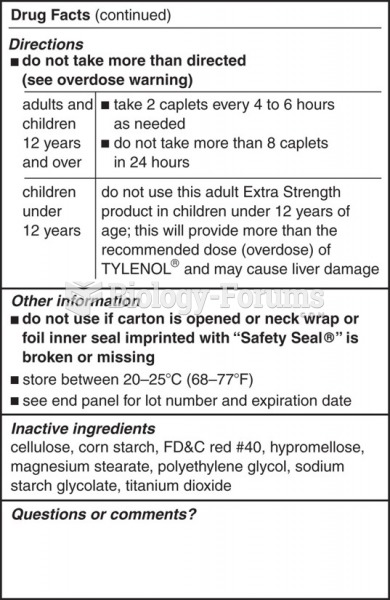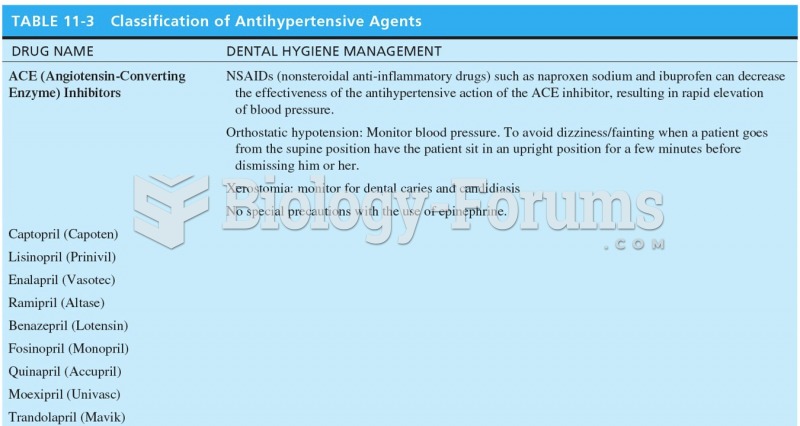Answer to Question 1
Correct Answer: 3
Rationale 1: Hypotension is not indicative of an allergic response.
Rationale 2: The therapeutic effect of an antihypertensive drug is to lower blood pressure, but not cause hypotension.
Rationale 3: Hypotension with an antihypertensive drug would be considered an adverse effect of the drug.
Rationale 4: Hypotension is not an idiosyncratic reaction.
Global Rationale: While a decrease in blood pressure is expected with antihypertensive medication, hypotension would be considered an adverse effect of the drug. Hypotension is not indicative of an allergic response or an idiosyncratic reaction.
Answer to Question 2
Correct Answer: 1,2,3
Rationale 1: In order to help the client identify and prevent adverse effects, the client should be taught the therapeutic action, adverse effects, and when to notify the health care provider of adverse effects.
Rationale 2: In order to help the client identify and prevent adverse effects, the client should be taught the therapeutic action, adverse effects, and when to notify the health care provider of adverse effects.
Rationale 3: In order to help the client identify and prevent adverse effects, the client should be taught the therapeutic action, adverse effects, and when to notify the health care provider of adverse effects.
Rationale 4: It is not necessary to teach the client the chemical makeup of the drug.
Rationale 5: It is not necessary to teach the client the name of the drug manufacturer.
Global Rationale: In order to help the client identify and prevent adverse effects, the client should be taught the therapeutic action, adverse effects, and when to notify the health care provider of adverse effects. It is not necessary to teach the client the chemical makeup of the drug or the name of the manufacturer.






